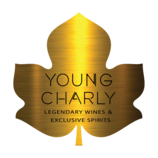Summer wines
What wines can you recommend to us in warm summer temperatures?
"During the summer, wines with a lower alcohol content are especially in demand because they drink a little more smoothly. This then refers to wines with an alcohol content of 8 to 11°, because anything below 8° is not actually wine. Within this category you do need to be very selective."
"A very nice example is the Niepoort winery located in Portugal's Douro Valley.. They have a white wine of around 11 to 12° and a red wine of 12°, while people usually link this region to bombastic and powerful wines of around 15 to 16°.. That has everything to do with making the right choices, and they begin in the vineyard. Thus, their vineyards are north, higher and receive less sun. This results in slower maturation. In addition, they use older vines."
"Claude Bourguignon, a globally respected specialist in viticulture, even believes that vineyards should not be used until the vines are over 80 years old," he said.. Old vines have roots that are very deeply anchored in the soil, so global warming has much less effect on them."
What should one definitely look for when choosing a lower-alcohol wine?
"The trend toward lower alcohol levels increases the importance of getting advice from a specialized wine merchant. After all, there are also dangers involved. A good example are the German Riesling wines. These often have a lower alcohol content, but also need a certain age in the bottle to bring out the different facets of the wine. This is also the case for other wines with lower alcohol content. Without a certain age, they will usually have little character or complexity, as these need time to build up in the bottle."
"This is precisely why at Young Charly we always recommend choosing white wines that are at least a few years old and are already more balanced. Even with rosé wines, it is ingrained in many to invariably choose the youngest year. This is allowed, of course, but certain rosé wines can also age very nicely. You then get less fruitiness, but more complexity and balance. Everything also depends on the occasion. If you're going to drink it as an aperitif, it's best to drink it as young as possible. With a gourmet dinner or a barbecue, however, a rosé wine several years old can be just as satisfying."
What types of wine are on the rise?
"In Wallonia, people have been drinking three times more rosé wine than in Flanders for decades.. One drinks 20% rosé wine, less than 20% white wine and more than 60% red wine. In Flanders, we drink as much red wine, but more than 20% white wine and only 7% rosé wine. So there is still a lot of growth potential for rosé wine in Flanders, and we can see that in the rising sales figures. White wine must lose some popularity as a result."
"Another trend is the resurgence of light chilled red wine. Sancerre and Beaujolais are the classic examples, but more and more variants are popping up from Spain, Italy and even Sicily.. An interesting recommendation is the Frappato grape from Sicily, which you drink lightly chilled between 8 to 12°C."
What are the do's and don'ts when it comes to chilling wine?
"As a wine lover, I will never add an ice cube to my wine. Actually, you then simply dilute your wine with more water. But I have nothing against it in itself if others do, because there is also a history behind it. About 100 years ago, wines were much more punishing and people working in the vineyards drank wine all day long, which they then diluted with water. I myself, however, think it's a waste, especially for quality wines."
"Apart from that, certainly rosé wine should be properly chilled. A kitchen icebox is set on average at 4 to 5°C. If you pour the wine stored in it into an unrefrigerated wine glass, it will be about 6°C. In the sun, of course, that glass will heat up quickly. So you have to try to keep that wine cool. This can include. With an ice bucket, a cooler cover,... or by serving smaller refrigerated quantities on a regular basis."
"White wines can be divided into two types: the aperitif wines such as Sauvignon that may be chilled just like a rosé wine, and the Chardonnay and similar wines that may also feel free to stand a bit warmer. However, most Flemings like to drink their white wine cold, while true purists know that you shouldn't serve both white wine and rosé wine too cold. The colder the wine, the more acidic you experience it because it suppresses the rest of the profile. From 6°C the aromas open up more. But in itself, everyone does what they like best with that."



